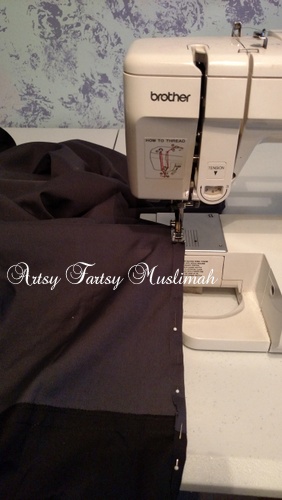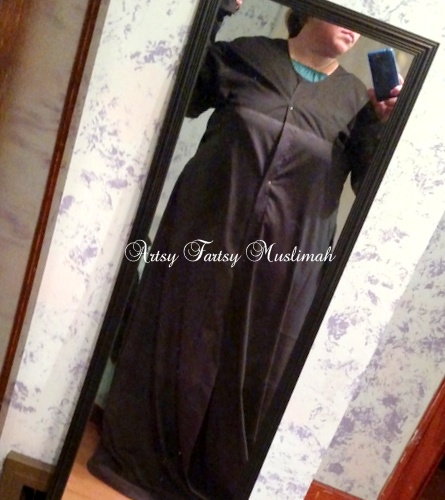.

Long before I reverted to Islam, I was very interested in the ideas of self-sufficiency and homesteading. The lure of independence was overwhelming. I longed to live with the simplicity of our ancestors. I yearned to make what we needed and make things last instead being caught in the constant cycle of consumerism. I felt an appreciation and reverence for God's creation and the resources He has given us and wished to respect that.
But then my first husband passed away. I was devastated. All the homesteading skills I had worked to develop seemed meaningless. I had no desire to work to create a utopia anymore. The utopia I had been working so hard to build was destroyed.
It took me seven years to remarry. And seven years to care about my future again. But falling in love for a second time, having an instant family with (mostly grown) step-children and a new home has brought back my love of the independent lifestyle, as well as a financial need for it.
As I have been gardening, canning, freezing, sewing, thrifting, etc. this summer I have thought a lot about how this translates into the Muslim lifestyle I now live.

In reading other blogs I have seen many reasons for pursuing such knowledge and lifestyle. One of the top reasons is religious beliefs. Many Evangelical Christians and Mormons believe in stockpiling food and learning essential skills such as canning and growing a garden. Their beliefs behind this are not that much different than our own. We too believe in an "end times". And preparing for any emergency is a smart idea. But I think there are even more compelling reasons for a Muslim to practice self-sufficiency.
1.) To better follow the rules of the Quran.
We are forbidden from collecting/paying interest. One of the "tenets" of self-sufficiency is frugality and having money set aside for emergencies, etc. When practicing self-sufficiency, you live a lifestyle that makes it easier to avoid buying on credit, borrowing money in emergency situations, etc.
Also, by living a simple lifestyle you avoid temptation for haraam activities. When you stop eating out as much you avoid your server asking you if you want something from the bar. When your friends know how you live (and probably live that way themselves), you will not get invited to haraam parties or outings to haraam places like a casino.
My husband, proud of some of the potatoes he grew this year.
When living simply, you will find your lifestyle centered around your home and your family. It will be easier to make your salat. You will have more choices about work as your dependence on your job lessens. As you grow your food piles and your savings and lower your wants, you will find you are not as tied to that job that requires you to be in the office/store/shop/etc. on Friday afternoons. You will find freedom to live as Allah intended.

2.) Safety.
Muslims across the globe are in precarious positions right now. Even in the USA. Times are good right now for us financially, but what about in the near future? It is easy to become suddenly unemployed in America, no matter who you are. But what if something happens to change the collective will and we suddenly are unemployable as Muslims? We will say alhamdullilah for a pantry of stored food, a fat savings account, and the skills to help ourselves.
Safety is also a daily concern for many Muslimahs, especially those living in the "Red" states or in some cities. Just a simple trip to the grocery store can result in harassment. So many hijabis are giving up wearing this sacred ayat of Allah because they fear for their safety. And in many cases, rightfully so! But what if there were options?
What if you didn't need to make little emergency trips to the store because you had a well stocked pantry, stored food, and a plan of what you would need? That way you could always plan your shopping trips with your husband, older son, father, or a group of women?
What if you didn't have to take that job you only took for the money because between living simpler and saving money, the money your husband makes is enough to support your family?

I see so many Muslimahs working hard to try and earn money for their families in a way they can do from home. Alhamdullilah! Now I challenge us all to learn skills to make us more self-sufficient, to store food for an emergency, and to save some of that hard earned money for a rainy day.
Not all the skills that can be learned or practiced for a simpler, self-sufficient life will interest you or even be possible in your situation. Find the ones that work for you. Implement them. See your life change for the better.
What 50 pounds of tomatoes looks like after canning. This is spaghetti sauce. Not having to buy it in the store, this lot will save me over $50 over the next year.
You don't need to live in the country and be interested in farming and animal husbandry. Many housekeeping and self-sufficiency skills were developed and adapted for urban dwellers during the World Wars. There was a great need during those times for growing your own food, storing the excess, and making what you owned last because resources were so scarce from the wars.
Remember that creating a self-sufficient life is a process, not a goal. Baby steps will bring you closer to what you hope for, but as you get closer your goals may change as well. Be prepared to accept yourself and your successes and failures along the way. Every little bit you do protects you in the here and now.
My husband's garden last year while living in an apartment. It is possible to garden anywhere. There are always container gardens and community gardens.
Since this has interested me for many years, I have some skills already in my arsenal (i.e. preserving food, simple cooking from scratch, sewing, knitting, etc.) And my husband brought with him some such as he is an excellent gardener and can do simple stuff on our car, among others. But in the areas of having a stockpile of preserved foods and bulk purchased items, saving an emergency fund, and implementing a workable budget, I am just getting started.
I intend to have my journey in all of this be a regular part of this blog. So far I have canned 50 pounds of tomatoes (and have 50 pounds more to go!), made about two gallons of apple butter, as well as some plum preserves and raspberry jam. I have started us on a budget and a strict savings plan. Our garden has produced even better than we expected. We have stopped eating out and bought a house within walking distance of our work, my parents, and the library. It is so nice to be feeling more in control of our life and finances and to know we are doing so in a halaal way. I hope you can find this serenity too, inshAllah!
****************************************************************
Please share with me in the comments below how you gain independence and self-sufficiency in our modern times.


































